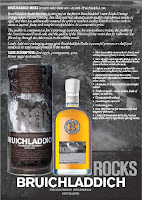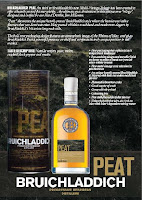Advanced Linux Command Mastery
Multi-terabyte filesystems on Solaris
At our shop, we still use UFS as the Solaris' filesystem standard. I was puzzled when a colleague came to ask if he could use ZFS on his Solaris 10 server, because he needed a multi-terabyte filesystem, and UFS supported this, but in an awkward manner. Now, personally, I don't favor filesystems this big, because the backup alone needs special care, but sometimes some applications force you to do weird things. But I had a hard time believing that Solaris 10 couldn't support this. Seems my colleague is right :
In Solaris 10, yo need to add the -T option to newfs when trying to format a +1TB filesystem :
This also will imply a hardcoded inode density, whereas each inode is 1MB big (nbpi reset to default 1048576). Which means your UFS filesystem will also only support 1 million files on your TB filesystem, which is *low*. The reason for this parameter is because a higher inode density on +TB filesystems could imply fsck times up to days. A corrupt filesystem is now a reason to invoke full disaster recovery.
AFAIK, the only possibility to change your inode settings on UFS filesystems this big, is to take the mkfs source code from OpenSolaris, change the nbpi parameter and compile it yourself.
Or change to ZFS or Veritas filesystems.
In Solaris 10, yo need to add the -T option to newfs when trying to format a +1TB filesystem :
newfs -T /dev/rdsk/c0t1d0s1
This also will imply a hardcoded inode density, whereas each inode is 1MB big (nbpi reset to default 1048576). Which means your UFS filesystem will also only support 1 million files on your TB filesystem, which is *low*. The reason for this parameter is because a higher inode density on +TB filesystems could imply fsck times up to days. A corrupt filesystem is now a reason to invoke full disaster recovery.
AFAIK, the only possibility to change your inode settings on UFS filesystems this big, is to take the mkfs source code from OpenSolaris, change the nbpi parameter and compile it yourself.
Or change to ZFS or Veritas filesystems.
Software RAID5 with mdadm
Software RAID5 in Linux with mdadm is a great way to gain massive amounts of disk space which are required for storing digital media, with the added security of data redundancy incase one of the disks in the array fail. Many people will point out that software RAID5 performance is horrible, but as the article points out, with multicore CPU's there is little point in offloading such a ’small’ task. (Note : home use here, wouldn't run a 300GB database on this, off course).
Solaris IP multipathing
Tech-recipes.com has a nice intro online how you can implement IP multipathing on Solaris, in case you have multiple network cards in your server, and want to loadbalance over it. Don't forget to contact your netwerk engineer !
Bruichladdich, Peat
The Bruichladdich distillery had some difficult times in the past : after being mothballed in 1994, it reappeared in the early 2000's, and it's managed since then by Jim Mac Ewan, former director of the Bowmore distillery, and an emblematic character of the Isle of Islay and winner of Distiller of the Year for an unprecedented three times. Since 2002, three single malts are produced at the distillery: Bruichladdich of course, but also a peaty malt, called Port Charlotte at 40 PPM and the earth shattering Octomore - the world's heaviest peaty whisky at an astounding 80.5 PPM.
Since some time, Bruichladdich creatively reinvents itself : Bruichladdich has tried to capture the Islay personality in their new 'Trilogy' of whiskies; Waves, Rocks and Peat. All evocative words that make one undoubtedly think of Islay. Perhaps not the idillyc Islay you might have experienced, but the real Islay.



Rocks will be the lightest of the lot, with fresh and fruity tones thanks to French Oak casks. Listed as a good aperitif whisky.
Waves will be mild, with hints of peat (15ppm, apparently). This is an "anytime of the day" whisky, is exactly the right time of day to pour your first dram.
Peat will be, er, peaty. Replacing the 3D series this is slightly toned down at 35ppm (so lower than Ardbeg) still with a rich peat flavor but without the more medicinal undertones.
Let's have a look at the Peat :
Smell : smoke, peat, and barely nothing else. Some faint hint of fruit, apple and pineapple.
Taste : Peat, and smoke again. Quite peppery aftertaste. Some tobacco in the aftertaste. A bit like Talisker, but friendlier and less complex.
The verdict : yummy ! A surprising friendly peated whisky, not too complex, but not boring either. Very well balanced between fruity and smoke. Excellent introduction into the world of peated whiskies. Time for another dram !
Since some time, Bruichladdich creatively reinvents itself : Bruichladdich has tried to capture the Islay personality in their new 'Trilogy' of whiskies; Waves, Rocks and Peat. All evocative words that make one undoubtedly think of Islay. Perhaps not the idillyc Islay you might have experienced, but the real Islay.



Rocks will be the lightest of the lot, with fresh and fruity tones thanks to French Oak casks. Listed as a good aperitif whisky.
Waves will be mild, with hints of peat (15ppm, apparently). This is an "anytime of the day" whisky, is exactly the right time of day to pour your first dram.
Peat will be, er, peaty. Replacing the 3D series this is slightly toned down at 35ppm (so lower than Ardbeg) still with a rich peat flavor but without the more medicinal undertones.
Let's have a look at the Peat :
Smell : smoke, peat, and barely nothing else. Some faint hint of fruit, apple and pineapple.
Taste : Peat, and smoke again. Quite peppery aftertaste. Some tobacco in the aftertaste. A bit like Talisker, but friendlier and less complex.
The verdict : yummy ! A surprising friendly peated whisky, not too complex, but not boring either. Very well balanced between fruity and smoke. Excellent introduction into the world of peated whiskies. Time for another dram !
Mars Phoenix lander Twitters
Judging by the number of Twitter fanboys, I must be the only one who think Twitter is one big pile of overhyped media crap. It is waste of time being promoted to lifestyle. Its success must come from the fact that one can peek into someone else's life, and realize it's as boring and meaningless as your own.
Still, some sites really use this channel to do something creative, and provide some sort of high-speed mini-RSS feed. The Mars Phoenix Twitter channel may be interesting to keep an eye to, certainly while NASA has briefed the US President about the discovery of something huge, and more "provocative" than the discovery of water existing on the Martian surface.
Still, some sites really use this channel to do something creative, and provide some sort of high-speed mini-RSS feed. The Mars Phoenix Twitter channel may be interesting to keep an eye to, certainly while NASA has briefed the US President about the discovery of something huge, and more "provocative" than the discovery of water existing on the Martian surface.
Argentum line
Do you really need a 40.000$ Leatherman ? Before you say no, have a look at their Argentum line.
Scapa, 14yo
In the shadow of the Highland Park distillery lies Scapa. Not so famous as its neighbour, this distillery produces one of my most favorite whiskies. The first bottle I tasted from Scapa was the 13yo, which was great, light, and fresh. The only drawback was its price tag. I was pleasantly surprised when I found its 14yo brother in my usual shop, but with a price tag that was 10 Euros cheaper.
What immediately hit me was the golden color : only one year more mature, this 14yo is much darker than its 13yo sister. Turns out this is not the only difference.
Let's skip the chitchat, won't we, and go straight to business :
The smell : floral, malty, fresh fruit, a gentle vanilla scent (though not too sweet)
The taste : malty again, quite some difference with the 13yo. Again quite fruity, mostly pear. Some complexity, vanilla, followed by dark chocolate. Spicy, with a strong sherry taste.
Conclusion : quite a difference from the gentle 13yo, even in such a degree, that judging from the taste & color, I almost would say this whisky must have aged in different kind of barrels than its younger sister. Whereas the 13 reminds me more of a gentle Speyside, this has the taste of a typical Highland whisky. But still, a magnificent taste, light, friendly, but with a surprising complexity.
Scapa rules, a stellar whisky.
What immediately hit me was the golden color : only one year more mature, this 14yo is much darker than its 13yo sister. Turns out this is not the only difference.
Let's skip the chitchat, won't we, and go straight to business :
The smell : floral, malty, fresh fruit, a gentle vanilla scent (though not too sweet)
The taste : malty again, quite some difference with the 13yo. Again quite fruity, mostly pear. Some complexity, vanilla, followed by dark chocolate. Spicy, with a strong sherry taste.
Conclusion : quite a difference from the gentle 13yo, even in such a degree, that judging from the taste & color, I almost would say this whisky must have aged in different kind of barrels than its younger sister. Whereas the 13 reminds me more of a gentle Speyside, this has the taste of a typical Highland whisky. But still, a magnificent taste, light, friendly, but with a surprising complexity.
Scapa rules, a stellar whisky.
Onweer
 Wat een weertje. De laatste drie zomers kenmerken zich door uiterst zwoel, en onstabiel weer. Begin verleden week werden we vergast op een schouwspel van jewelste : een kanjer onweer in de verte, met bliksems om de paar seconden - gelukkig zaten we er niet onder.
Wat een weertje. De laatste drie zomers kenmerken zich door uiterst zwoel, en onstabiel weer. Begin verleden week werden we vergast op een schouwspel van jewelste : een kanjer onweer in de verte, met bliksems om de paar seconden - gelukkig zaten we er niet onder.
Eén van de bliksems kon ik op m'n Everio camcorder vastleggen, en naar foto's converteren : deze acht foto's tonen een uiterst helder exemplaar, en bestrijken zo'n totale tijdspanne van 0.25 seconden. De interlace van de camcorder is "mooi" te zien, al is er veel verdwenen met de conversie naar JPEG. Ik heb geen correctie toegepast, anders verdween er teveel bliksem detail.
Printable star atlases
A decent star atlas is obligatory if you want to observe deep sky objects. It offers a nice glance on which objects are available for observation, and an easy way of star-hopping to get to the deepsky object. When I started astronomy at the age of 13, I bought myself the Will Tirion Star Atlas 2000. It was a book with 8 pages of star charts up to magnitude 6, and an explanation of every constellation in the sky.
Magnitude 6 is rather limited - if you have a small telescope, you'll quickly find stars up to magnitude 8. Luckily, there are some astronomers who have published some star atlases online :
Magnitude 6 is rather limited - if you have a small telescope, you'll quickly find stars up to magnitude 8. Luckily, there are some astronomers who have published some star atlases online :
- Toshimi Taki's star atlas offers 12 printable A3 pages with stars up to magnitude 6.5
- Andrew Johnson offers 20 A4 printable pages of star atlas up to magnitude 7 (18000 stars), available in black & white, or in color.
- And finally, Toshimi Taki also has a star atlas up to magnitude 8.5, offering an impressive 150 page atlas, covering 88000 stars.